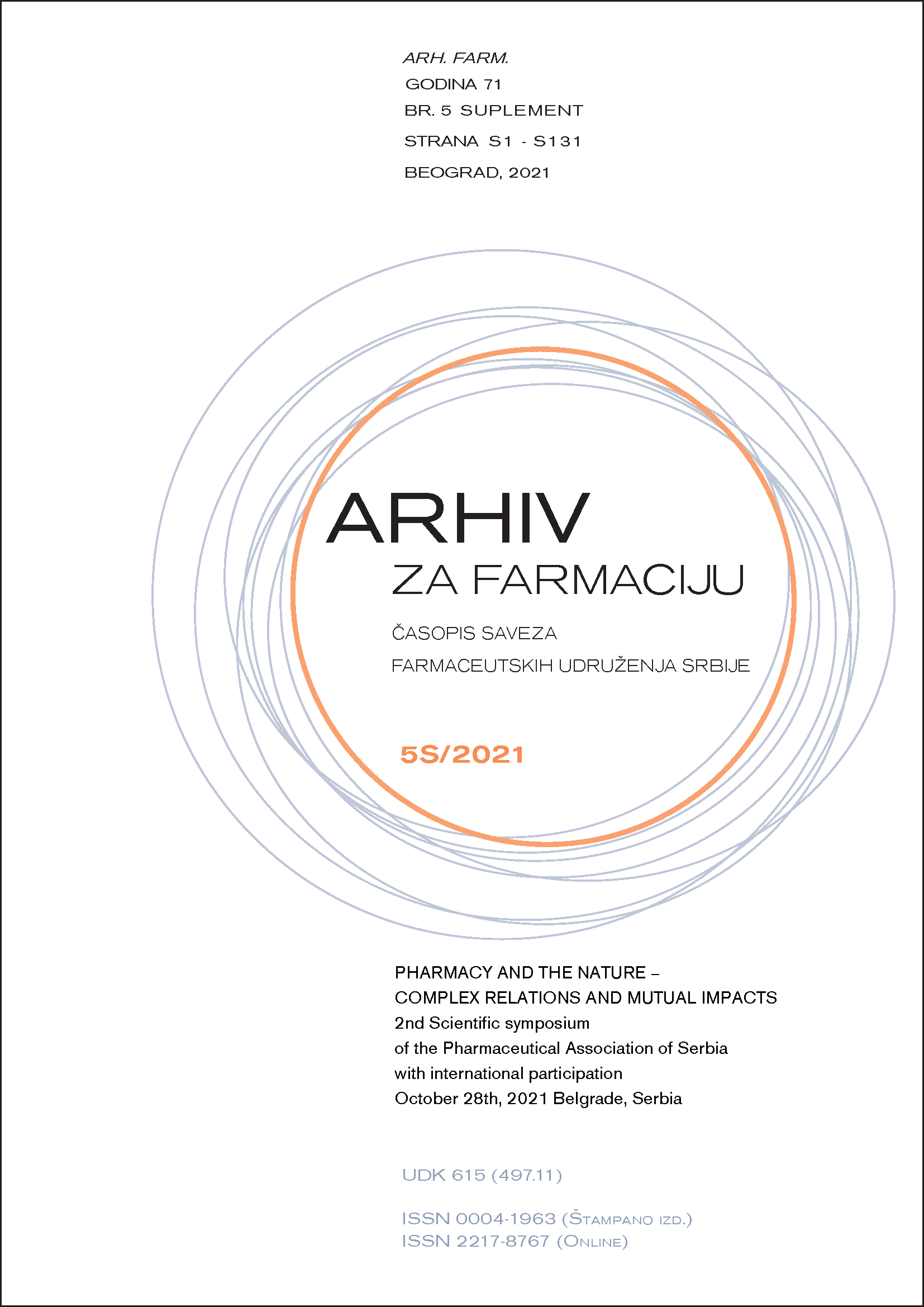LOW ENERGY NANOEMULSIONS AS POTENTIAL CARRIERS FOR ESSENTIAL OILS IN FORMULATIONS FOR ANTIOXIDANT SKIN PROTECTION
Abstract
Aromatic plants have been used since ancient times as a source of essential oils (EOs) which are known as natural remedies in traditional medicine systems – phytotherapy and aromatherapy, but they are also widely used for everyday purposes (for example, as fragrant components in skincare preparations and perfumery; as flavours and natural preservatives in food industry). It is known that many EOs contain molecules with considerable antioxidant activity, such as phenolic compounds, flavonoids and terpenoids, acting alone or synergistically. Besides antimicrobial action, EOs prepared from plants form the Lamiaceae family, such as basil −BA (Ocimum basilicum), oregano – OR (Origanum vulgare) and lemon balm − LB (Melissa officinalis) leaves are reported to scavenge free radicals (1). Therefore, these particular EOs and their bioactives could be good candidates for skin-protective formulations. Nanoemulsions (NEs), especially those produced by low energy methods, are recently proposed as prospective carriers for sensitive and natural ingredients such as EOs, in order to ensure their stabilization. Additionally, some EOs can act as cosurfactants and promote low energy nanoemulsification. Having in mind that EOs cannot be used undiluted, oil-in-water NEs could be an appropriate delivery system, representing fluid formulations with ultra-fine droplets, pleasant visual appearance, and improved stability compared to classic macroemulsions (2). Firstly, NEs were prepared different EOs (BA, OR or LB) with polyethylene glycol free (PEG-free) natural surfactants/emollients mixture (containing polyglycerol-4 laurate as the main surfactant) suitable for cold processing via the Phase inversion composition (PIC) method. NEs physicochemical stability was confirmed by particle size distribution analysis, electrical conductivity and pH value measurements, as well as by optical microscopy observations. The type of EO and the concentration of surfactants/emollient mixture were proven to be crucial factors governing NE properties and stability. Raman spectra of EOs verified their main active ingredients and detected possible interactions with the nanocarrier (3). The antioxidant activity towards the DPPH radical in methanol was concentration-dependent with a similar trend for neat oils and oil-loaded NEs (OR> LB> BA). However, the ABTS test in an aqueous medium revealed notable change in the order of activity with increased EO concentration and after EO nanonisation. Overall, the highest antioxidant activity was observed for OR and OR-loaded NE (> 95% INHABTS and > 85% INHDPPH), implying at some optimal package of OR within the nanocarrier which preserved its high antioxidant performance and ensured its stability during 6 months of storage.
References
2. da Silva Gundel, S, Velho, MC, Diefenthaler, MK, Favarin, FR, Copetti, PM, Fogaça, AO, Klein, B, Wagner, R, Gundel, A, Sagrillo, MR, Ourique, AF. Basil oil-nanoemulsions: Development, cytotoxicity and evaluation of antioxidant and antimicrobial potential, J. Drug Deliv. Sci. and Tech. 2018; 46: 378-383.
3. Daferera, DJ, Tarantilis, PA, Polissiou, MG. Characterization of essential oils from lamiaceae species by fourier transform Raman spectroscopy. J. Agric. Food Chem. 2002; 50: 5503-5507.

